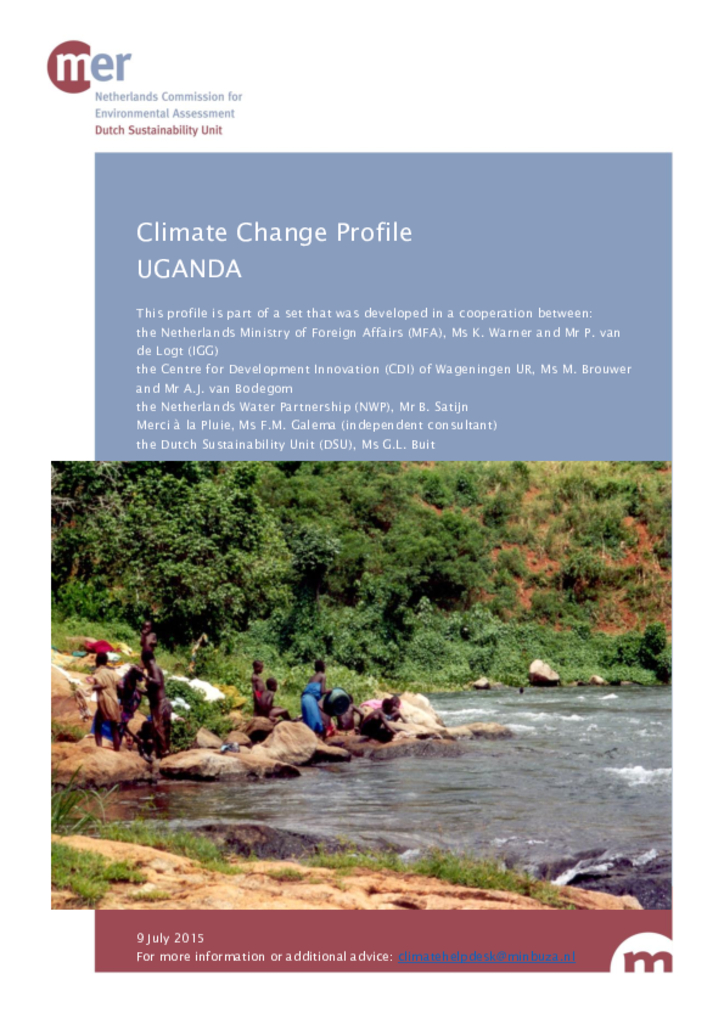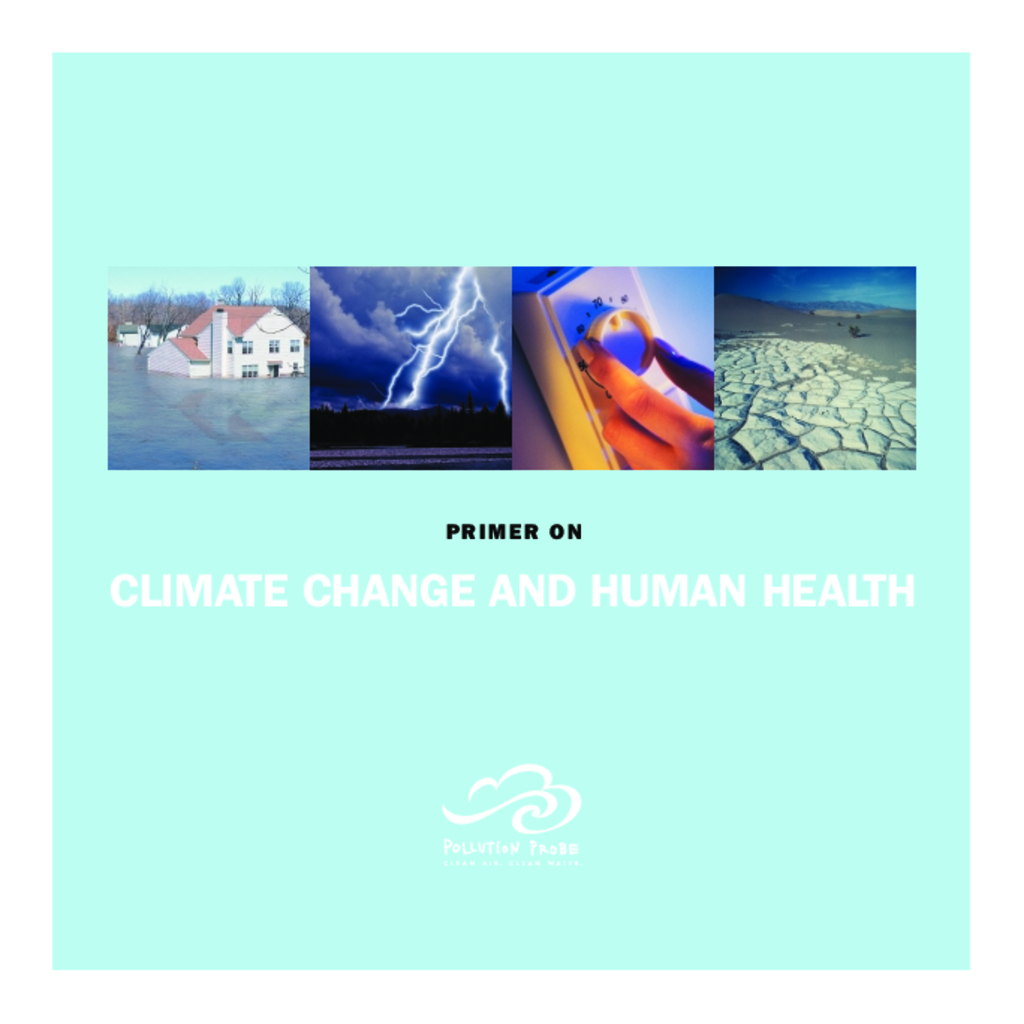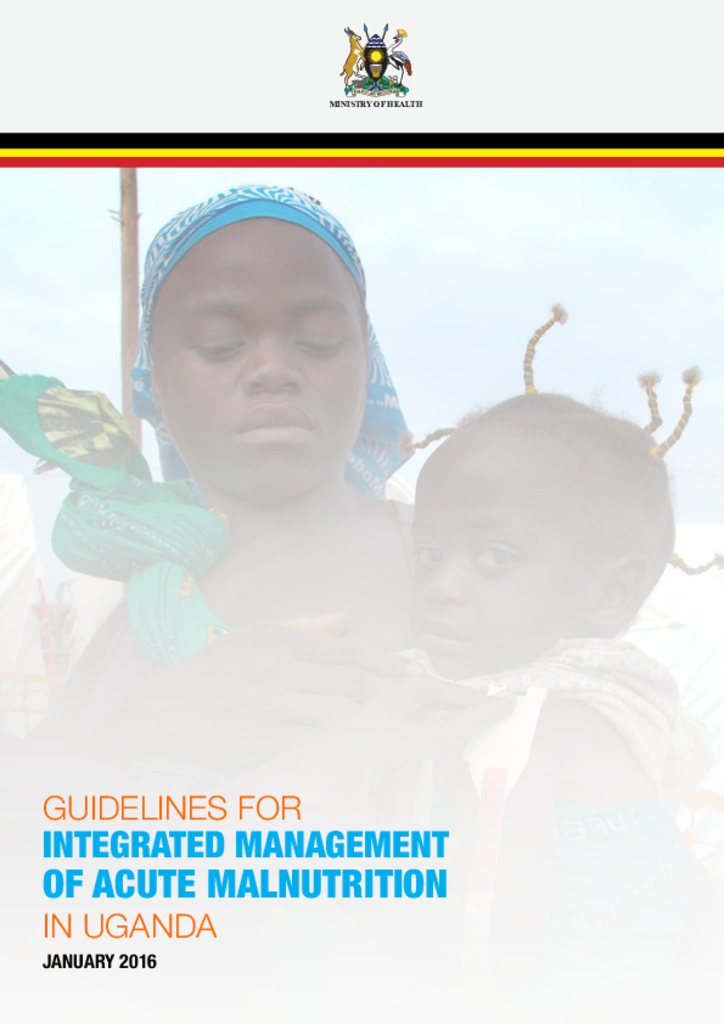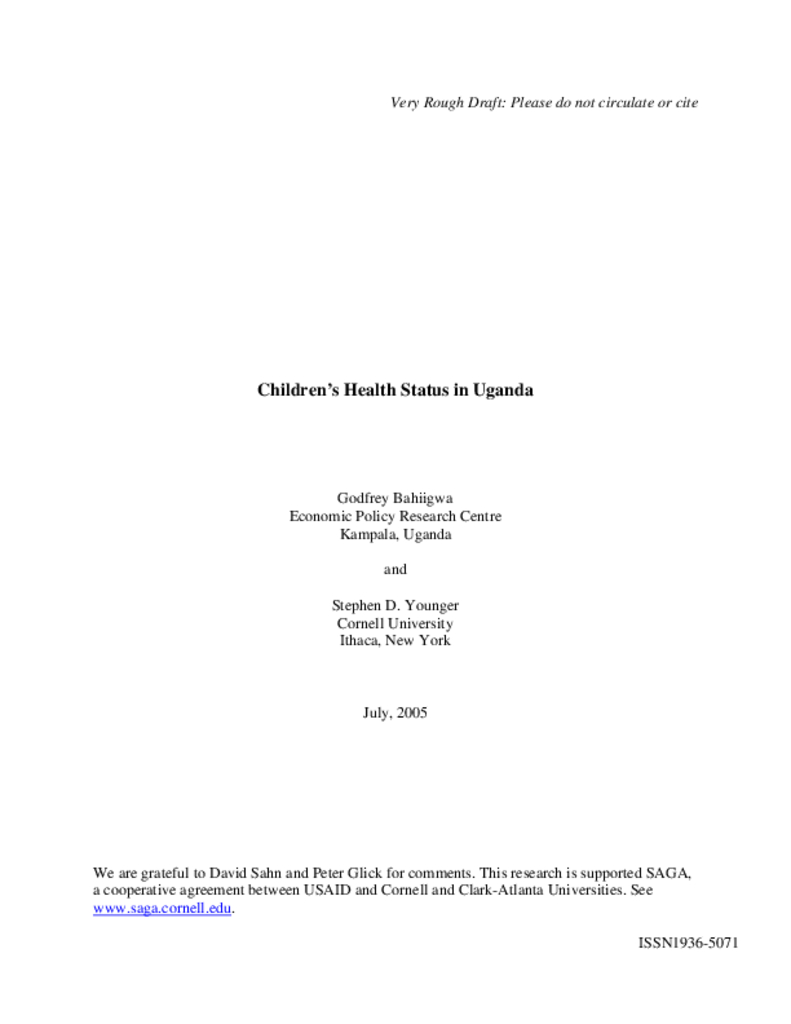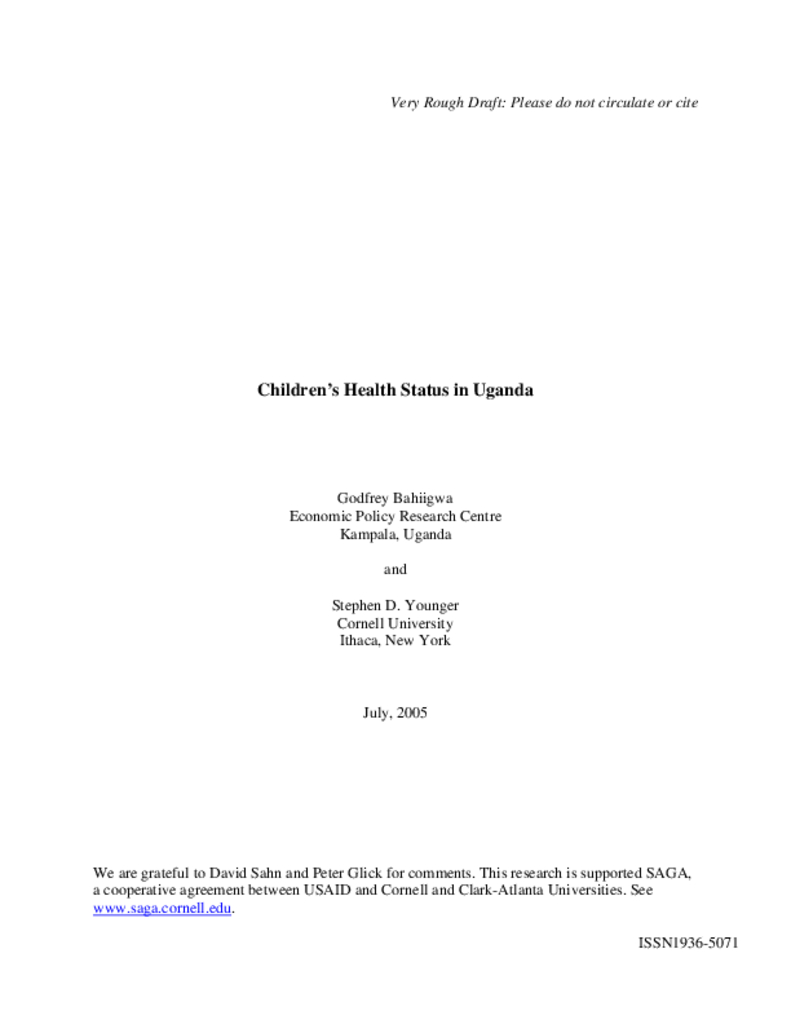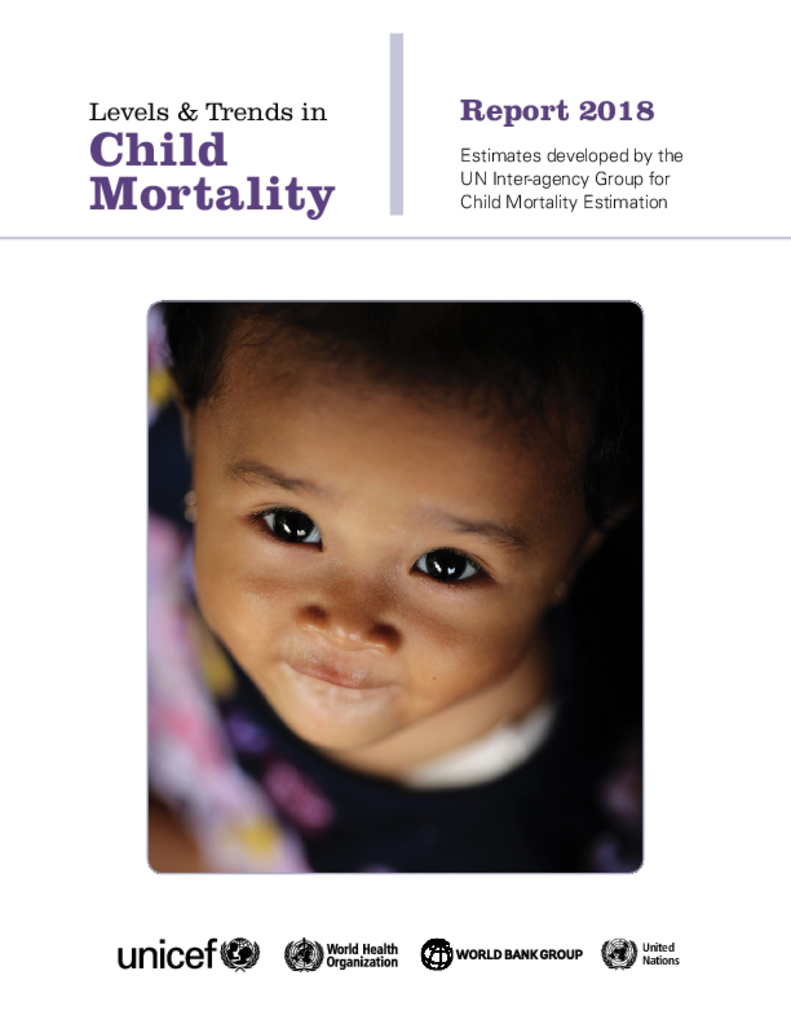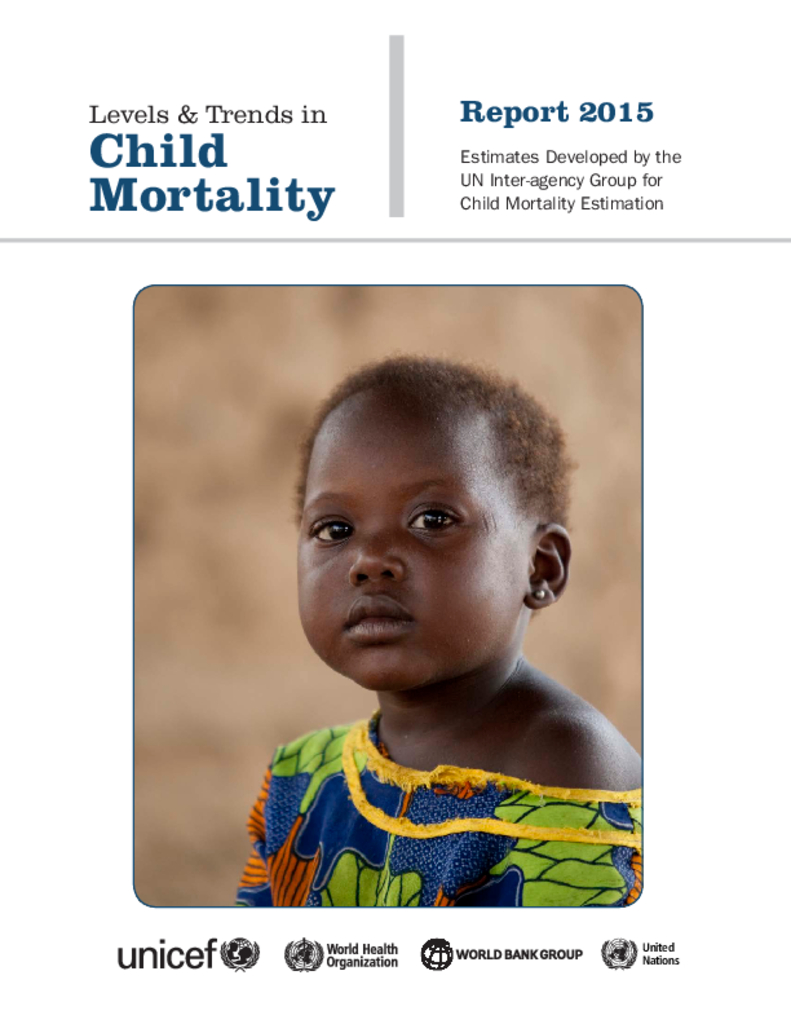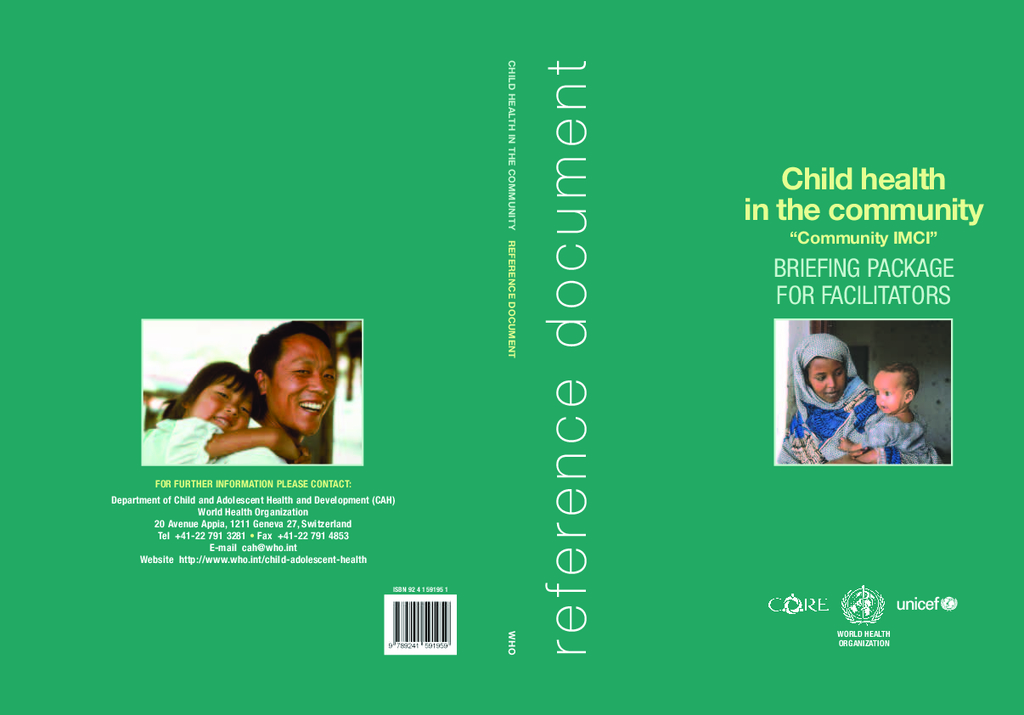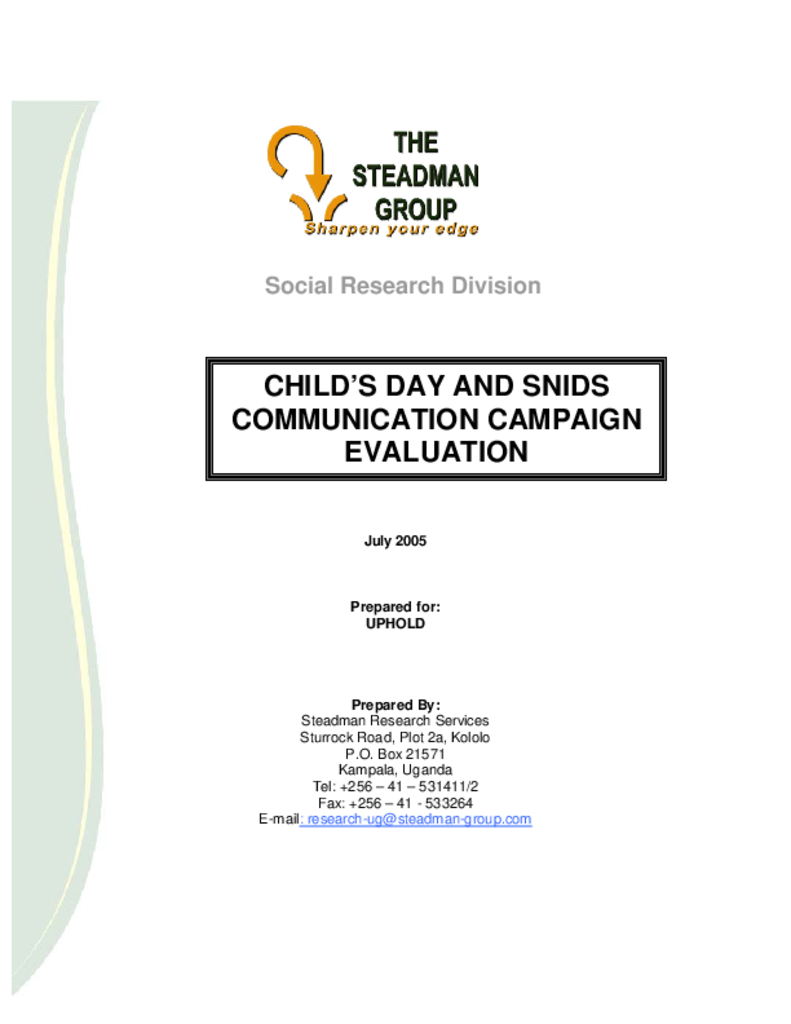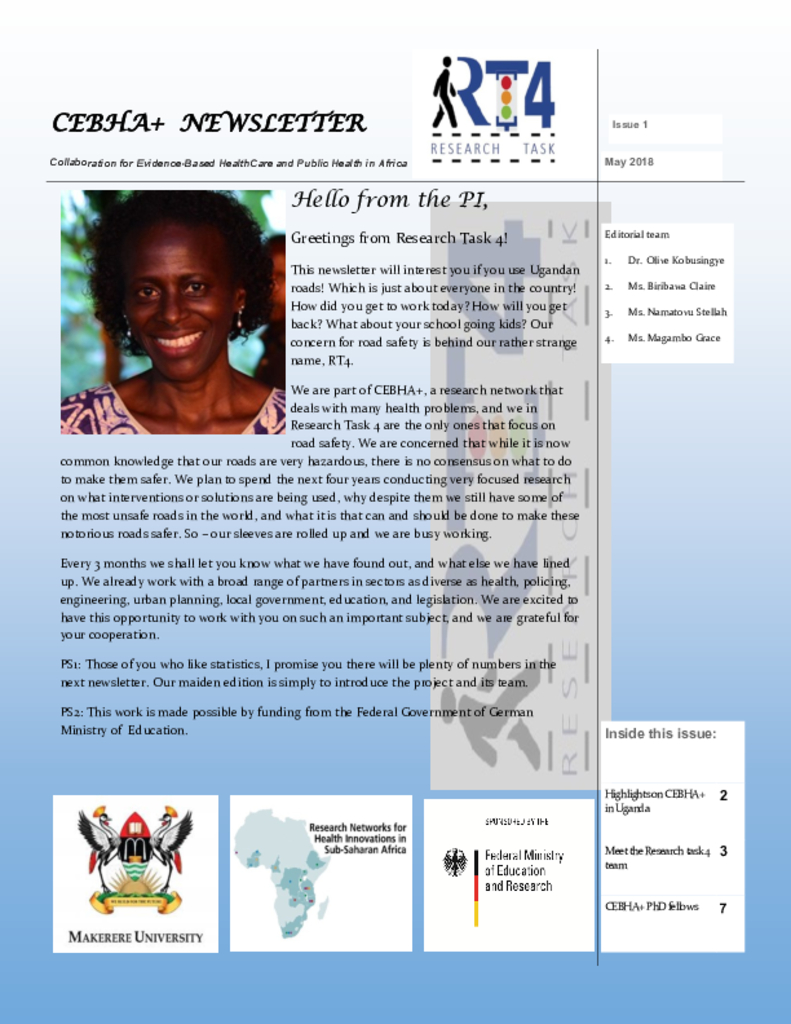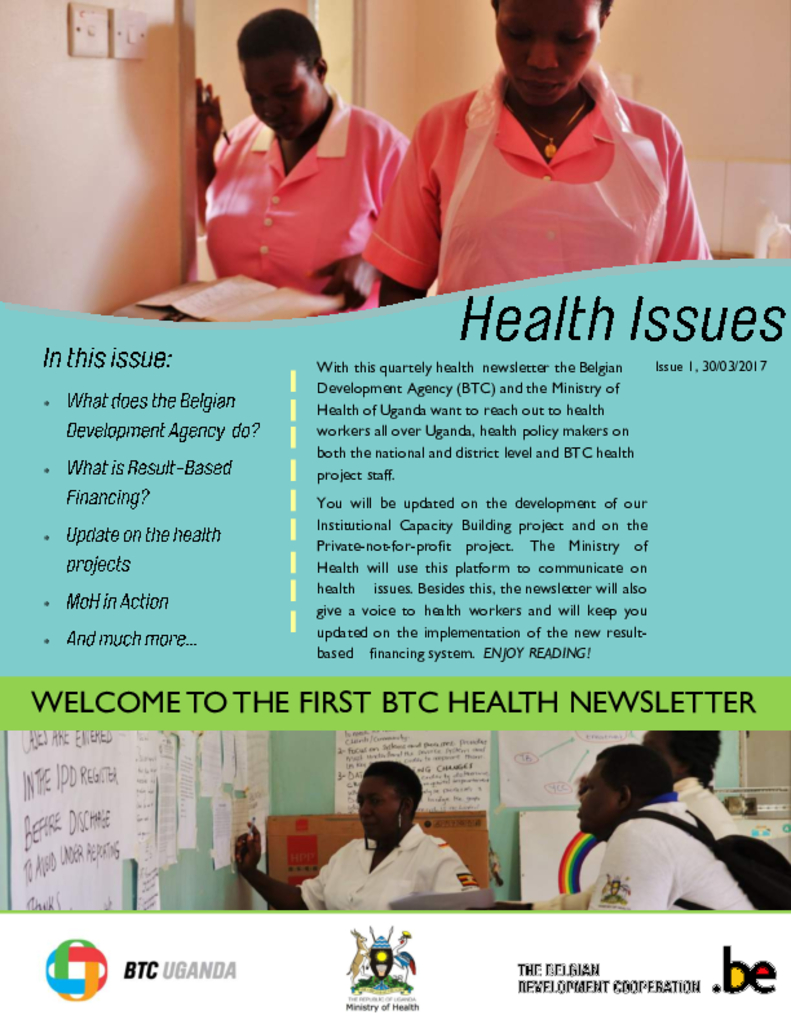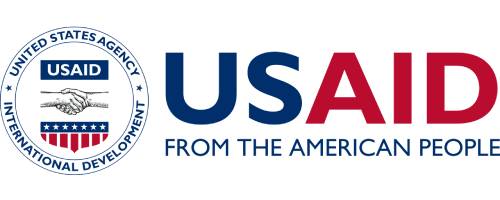The strong links between socio-economic factors or public policies and health were documented in the World Health Organization (WHO) Commission on Social Determinants of Health report. Yet even when health and health equity are seen as important markers of development, expressing the benefits of social determinants of health interventions in health and health equity terms alone is not always sufficiently persuasive in policy settings where health is not a priority, or when trade-offs exist between health and other public policy objectives
A landlocked country, Uganda’s regions - the mountain regions, lowlands, and the cattle corridor - differ in their vulnerability and adaptive capacity. Agriculture is the main economic sector, accounting for 25% of its Gross Domestic Product (GDP) and employing 70% of the labour force. Uganda faces several developmental constraints, including high population growth (3.3%), post-conflict conditions in the north, soil erosion and degradation, and pernicious impacts of malaria and HIV/AIDS. Increasing variability in rainfall and temperature will present an additional stress on development in the country, especially with its high dependency on rain-fed agriculture. Rising temperatures and shifting or increasingly unpredictable rainfall patterns can reduce the extent of agricultural land, shorten growing seasons, hamper crop production, undermine the (ground) water resources and alter the occurrence and distribution of pests.
There is international scientific agreement that the world is getting warmer. By examining climate records, scientists have determined that the temperature of the air at the Earth’s surface has warmed by approximately 0.6°C since the late 19th century (see Figure 1-1). Evidence from tree rings, tropical corals and Greenlandice cores indicates that, at least for the Northern Hemisphere, the 20thcentury was the warmest of the past 1,000 years, with the 1990s being the warmest decade of the millennium. Furthermore, it’s getting ever warmer — most experts agree that average global temperatures will rise by 1.4°C to 5.8°C over the next century.
Malnutrition can be either under-nutrition or over-nutrition (obesity). This guideline will specifically deal with acute malnutrition as a form of under nutrition. Under nutrition is the result of deficiency of protein, energy, minerals as well as vitamins leading to loss of body fats and muscle tissues. It is of a major public health concern in Uganda that affects both children and adults. The statistics show that 300,000 children (5% nationally) are estimated to be acutely malnourished and nearly 120,000 (2%) of them have severe acute malnutrition (Uganda Demographic Health Survey, 2011).
This paper studies trends and determinants of children's standardized heights, a good overall measure of children's health status, in Uganda over the 1990s. During this period, Uganda made impressive strides in economic growth and poverty reduction (Appleton, 2001). However, there is concern that improvements in other dimensions of well-being, especially health, has been much weaker.
With 57% of our population below the age of 18, Uganda is a young country and there is no doubting that our future lies with our children. In 2040, when our national Vision is to be a middle income country, children being born now will be the productive engine of our economy. The Child Poverty Reports look in detail at how our children are progressing, and places the issue of Child Poverty at the front and centre of the agenda. It makes the case that where children experience poverty, they will not be able to unleash their potential for themselves, their communities and our country as a whole
Over the last two decades, the world made substantial progress in reducing mortality among children and young adolescents (including children under age 5, children aged 5−9 and young adolescents aged 10−14). Still, in 2017 alone, an estimated 6.3 million children and young adolescents died, mostly from preventable causes. Children under age 5 accounted for 5.4 million of these deaths, with 2.5 million deaths occurring in the first month of life, 1.6 million at age 1–11 months, and 1.3 million at age 1−4 years. An additional 0.9 million deaths occurred among children aged 5−14.
The Inter-agency Group for Child Mortality Estimation (UN IGME) constitutes representatives of the United Nations Children’s Fund, the World Health Organization, the World Bank and the United Nations Population Division. The child mortality estimates presented in this report have been reviewed by UN IGME members. As new information becomes available, estimates will be updated by the UN IGME. Differences between the estimates presented in this report and those in forthcoming publications by UN IGME members may arise because of differences in reporting periods or in the availability of data during the production process of each publication and other evidence.
Integrated Management of Childhood Illness (IMCI) Children under five years of age bear a disproportionate share of the global burden of disease. While major gains have been made in reducing childhood mortality during previous decades, stagnation or even reversals of trends have been observed recently in many countries. Most of the nearly 11 million child deaths each year are concentrated in the world’s poorest countries in sub-Saharan Africa and South Asia. Diarrhoea, pneumonia, and neonatal conditions are the most prevalent causes of childhood mortality worldwide, with malaria and HIV infections contributing in many areas. Malnutrition is associated with 54% of all child deaths, and measles remains a major cause of death.
Vitamin A deficiently was recognized as one of the major public health problems contributing significantly to under 5 years mortality, increases susceptibility to infection, lowers immunity leading to frequent ill health and poor growth among children under five years of age. n 1999 the Ministry of health undertook an initiative to tackle this problem by introducing Vitamin A supplementation with the polio campaign and in the subsequent years it was combined with the measles immunization campaign until 2003. Although significant Vitamin A coverage was achieved through this strategy it was realized that the immunization campaigns were short-term strategies, costly and unsustainable and therefore not a total solution for the Vitamin A problem.
This newsletter will interest you if you use Ugandan roads! Which is just about everyone in the country! How did you get to work today? How will you get back? What about your school going kids? Our concern for road safety is behind our rather strange name, RT4.
We are part of CEBHA+, a research network that deals with many health problems, and we in Research Task 4 are the only ones that focus on road safety. We are concerned that while it is now common knowledge that our roads are very hazardous, there is no consensus on what to do to make them safer.
BTC is the Belgian development agency. We support development projects across the globe to eradicate poverty. The Sustainable Development Goals are the global framework for BTC's support to different countries around the globe. Our activities focus on fragile states and the least developed countries, primarily in Africa.

